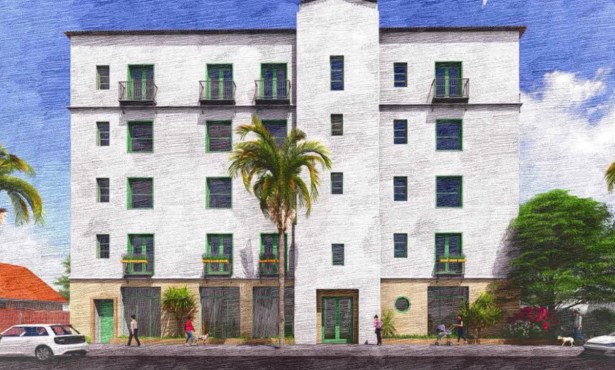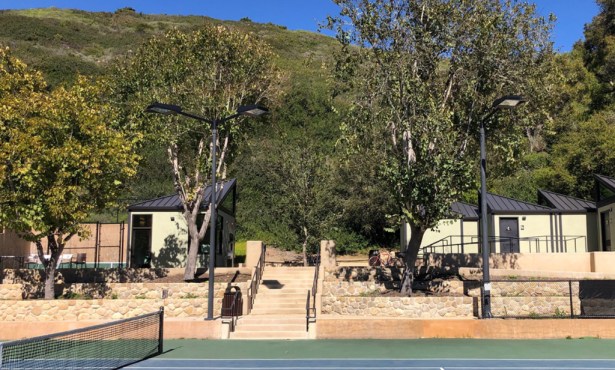The Buck Starts Here
Tradition and Local Talent Dominate the Fiesta Rodeo
by Bob Isaacson
Fiesta, as a celebration of California’s Spanish and Mexican
heritage, has always been a dramatic and large-scale equestrian
event at its core. Both the parade and the rodeo reflect the
profound influence of an equestrian culture in both the
tri-counties’ past history and the present day. It is the rodeo
that most closely brings alive the tradition of the extraordinary
skills of the Spanish- and Mexican-era vaqueros of the early 19th
century. Anglo travelers to the then-remote land of California were
amazed at the horsemanship skills of the Californios. Anglos then
tended to ride with snaffle bits, pulling their horse’s head to one
side or the other to turn it, but the Californios rode using the
Spanish hackamore and spade bit, neck-reining their horses,
teaching them to turn and spin when the rein lightly touched the
opposing side of their horses’ necks, and, of course, to stop on a
dime. After watching the vaqueros gather and work large herds of
wild cattle on the old ranchos with ease and great style, these
early travelers often declared the Californios to be the best
riders in the world.
Back in the ’50s I used to go with my family to the Fiesta rodeo
when it was held in a wooden, green painted corral complex down
near the sea where the City College baseball field is now located.
I can vividly recall seeing saddle broncos dumping their riders in
the dirt, like scenes from an Ed Borein sketchbook. The contestants
were generally cowboys from the large cattle ranches over the
mountains to the north and up the coast to the west.
Today’s Fiesta rodeo still showcases this long tradition of
including a great deal of local talent. Of course, each evening the
rodeo programs will offer the high-quality Professional Rodeo
Cowboys Association (PRCA) events, which let us watch competition
at the national level, along with some of the finals of the local
competitions. Not everyone knows that during the daytime — each day
of Fiesta — the local elimination performances are held and are
open to the public at no charge. Many of these events closely
resemble everyday ranch work. The Alisal, Open Stock Horse, and
Fiesta Ranch Horse classes, for example, allow tri-county riders to
work and rope cattle, much as they are called upon to do on a daily
basis on today’s ranches. Watch for the teams of Dennis Domingos
and his son, Jason, of Buellton; or John and Shannon McCarty of the
Hollister Ranch, testing their skills in the Open Stock Horse
Class, during which contestants sort and rope range-cattle.
The Hackamore Class has always been my personal favorite. The
Californios trained their horses in distinct stages, starting with
a hackamore, which consists of an intricately braided rawhide
noseband called a bosal that was tied to horsehair reins. When the
young horse was turning, backing, spinning, and stopping well in
the hackamore, it would graduate to the double reins (los dos
reinas), in which the young horse would then carry both a bosal and
a spade bit, and the rider would hold two sets of reins at the same
time in one hand. As the horse got used to the bit, the vaqueros
would very gradually use the reins attached to the bit more and
more, until they could remove the hackamore and just use the reins
attached to the bit. This process might take a long time, perhaps
as many as eight years, as the vaqueros were in no hurry to finish
a horse. The young horses in the hackamore class are a joy to watch
as they turn cattle and run through different patterns controlled
expertly by the rider, with only a rawhide noseband.
The Stock Horse Class features finished, polished stock horses
that have graduated through this age-old process, demonstrating the
same skills. A horse is considered a finished horse when it is
controlled by a curb bit. Traditionally, local cattle-ranching
operations, like the Hollister Ranch, have sponsored this event,
donating the trophy saddles. Watch for seasoned trainers and riders
including Sandy Collier, Ted Robinson, and Tom Shelley, in this
event.
The Hackamore and Stock Horse classes are generally dominated by
local professional trainers who have devoted their careers to
turning out finely tuned show horses of the highest caliber. The
Open Stock Horse Class and some of the other events, on the other
hand, permit talented non-professional riders from local cattle and
horse ranches to enter horses that are used to do daily ranch work.
In these events, riders and horses are judged on their ability to
sort cattle, rope a steer, and other typical tasks associated with
managing cattle. They are exciting to watch and offer viewers a
window into how horses are actually used on our local ranches
today.
For all of these events, the cow horses selected for the evening
rodeo performances have been through a rigorous and formal
selection process. This process of elimination effectively narrows
each class down to five or so finalists to fit them into the rodeo
performance.
On Thursday, August 3, the Tri-County Stock Horse Show will
bring in local riders to compete in the Alisal Ranch Horse Class,
the Fiesta Ranch Horse Class, and the Buckaroo Class. Old-timers
will also be team roping and steer stopping on Thursday. Next, on
Friday, August 4, beginning at 7:30 a.m., tri-counties junior
riders will compete in breakaway roping, tie-down roping, team
roping, and barrel racing. On Friday at noon, riders will compete
in the Open Stock Horse and Hackamore class eliminations. On
Saturday, August 5, starting at 7 a.m., you can wander through the
stable areas and see the riders prepare for competition and then
later you can sit comfortably in the stands and watch the
performances for hours, free of charge. Local riders will be roping
in various events during this time as well. For horse and history
lovers, these free performances are the best chances to experience
what it was like in the original competencias de los vaqueros of
the 19th century, when the old ranchos informally competed against
each other to determine who had the very best horses and riders at
cattle gatherings (rodeos) and fiestas.
If you can only spare the time to go to only one of these free
Fiesta week rodeo performances, you should watch the calf-branding
event. To really get a sense of the work and life and real talent
in our local cattle culture today, one could do no better than wake
up early Sunday morning and go down to the Earl Warren Showgrounds
at 9 a.m., to watch this unique competition. It is a pity that this
event does not make it to the formal rodeo performances. In it,
local horsemen and women, generally from our many North County
ranches, work in teams of four to rope and brand (with paint) two
calves. The event is a timed one, but more important than speed is
the talent, fluid roping styles, and fun. The calf-branding
competition is as close to the real thing as you can get. You will
see local teams like that of Austin Campbell, Donald Woodward,
Corbet Smith, and Nick Bailey competing with teams from all over
the tri-counties. Perhaps this part of the show is only for
insiders; nonetheless, La Competencia de Los Vaqueros will
offer you the best glimpse into the skills that were developed and
celebrated by the old Californios and that are still required to
work and manage livestock than those in this event. Come on down
and take a look inside.


